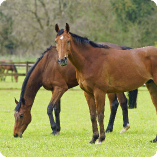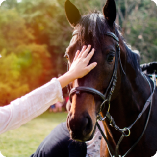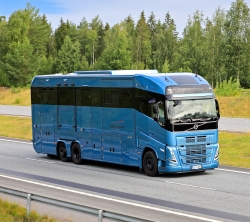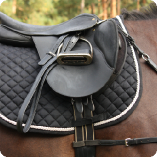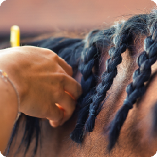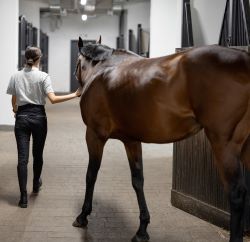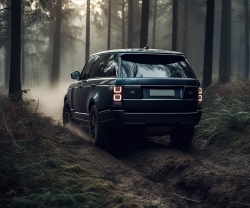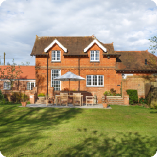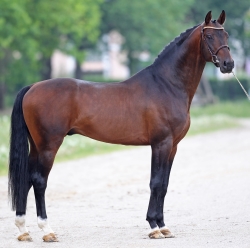The Importance Of The Warm Up

Hello, Edward here,
This time I thought I would talk about the importance of the warmup when riding and provide some top tips to help perfect yours,
The warmup is very important when riding, when done correctly it can have a huge benefit on the horses way of going. Here are my top tips on getting the most out of the warmup:
1. When you first get on try and think about what you have planned and warm up your horse accordingly. As warming up for cross country is going to be different than dressage, for instance. Really concentrate on getting the horse off your leg and focussed on you. This can be done via transitions, changes of rein and arena figures.
2. Once the horse is responding to your aids start to work your way down the scales of training.
Rhythm should be both:
1. Regular, that is correct for each pace. In the walk there should be four hoof beats – in a marching time. In the trot there should be two hoof beats – the legs move in diagonal pairs plus a moment of suspension when all legs are off the ground. In the canter there should be three hoof beats – only one diagonal pair move together and there is a moment of suspension.
2. The same tempo (speed of the rhythm) with a pronounced beat to it. The horse should not speed up or slow down whether he is going around a corner or on a straight line, whether he is lengthening his strides or shortening them.
This can be done in all paces, really concentrate on keeping the rhythm throughout transitions and ensuring the horse isn’t being lazy or too fast.
-
Suppleness The aim is that the horse’s muscles have tone and are free from resistance, his joints are loose and he does not tighten against the rider’s aids. The muscles that are really important are those over the top line from the hind legs over the quarters, loins, in front of the wither and up to the poll. The test of whether a horse is supple and working ‘through’ the back and neck is that when the rein contact is eased (as in a free walk) the horse wants to stretch forward and down and not try to hollow and lift his head.1
This can be improved via stretching, shallow loops, circles, serpentines and some lateral work so try to incorporate these. One of the main points to note when warming up is to do equal on each rein.
-
Once you have worked on both rhythm and suppleness you can now focus on achieving a better contact. Note for the previous two you still need to have a good contact however it isn’t the main focus so if it’s not perfect don’t worry until this stage.
Contact The ideal contact is a light, even, elastic feel in both reins and this is achieved by aids from the legs and seat, not the hands. The legs are applied as a driving aid, the horse steps under more and works ‘through’ those muscles along his top line – over the back, neck, through the poll and to the bit. The rider feels the energy thus created in the reins. When the contact is established in this way the horse’s outline and steps will be ‘round’ not hollow, and in the trot and canter springy and not flat. The horse’s hindquarters and forehand are connected by that band of muscles over the top line and the rider can feel this in his hands as there will be a lively forward tendency in the reins. The horse is then said to be ‘connected’.
Really focus on getting the horse to work into the contact from behind, as the definition focuses on stepping under, energy and with a connection from the hindquarters to the forehand.
-
The next one is Impulsion. This is the contained power of the horse. It is created in the hindquarters by getting him to take more energetic steps, to place his hind legs further under his body, and it is contained by the rein contact that stops him from using up this extra energy to simply go faster. Any resistance, tightening of muscles, ligaments and joints, will block this energy getting through so he must be supple and connected to be able to build up real impulsion. Riders aim to create enough impulsion to develop the horse’s ability and to show off his athleticism but not so much that it cannot be controlled. The skill of the rider is to create as much energy as can be contained without the horse starting to pull or speed up.1
-
Straightness Horses, like humans, are born one sided and will tend to move forward with their bodies slightly curved. This crookedness can get worse if a rider sits to one side and/or keeps a stronger contact in one rein than the other. When a horse is crooked it will be more difficult for him to stay balanced and develop impulsion. The aim is that the hind legs step into the tracks of the forelegs both on a straight line and on a circle, and that the rider has an even feel in his reins.1
One of my favourite simple exercises to test straightness is getting the horse to walk, trot, canter and make transitions on the ¾ line. This can be a real test for some horses who use the walls to balance, working on this when warming up can help improve the work later on when riding.
-
Collection: this is one of the scales that may not be needed to be bought in in the warmup, this is due to it not being needed for some horses as it’s passed their level of training. However here is the definition:
Collection Dressage makes the horse a better ride, more manoeuvrable, more powerful and easier to control. To achieve this, his balance has to be changed as he has to adjust to carry the weight of the rider in the most efficient way. When he is first ridden he will carry most of the rider’s weight on his forehand. This is cumbersome; he will tend to run faster when asked to lengthen his strides, he will find it difficult to stop quickly and will often lean on the rider’s hands to keep his balance. Through training, the necessary muscles are built up and he is taught how to carry more and more weight on his hindquarters. This lightens his forehand, gives more freedom to move his shoulders and he will become an easier and more athletic ride. Over time the horse is asked for more and more collection so his hind legs step further forward under his body and as he does this, the weight will be transferred backwards, developing the carrying power of the hindquarters.
- Once the horse is warmed up focusing on the above you can then begin the work you will do in the main section of your session.
Definition taken from british dressage rulebook
When warming up I always try to make sure the horse is understanding all my aids fully, whether that be single leg aids, weight aids in the saddle or rein aids, they need to be listening to be straight away as soon as I get on them. However remember to take things slow in the warmup, I normally warmup for at least 10 minutes before I start my main tasks to ensure that the horse is ready to perform to the best if its ability. I like to incorporate some counter canter and some basis lateral work towards the end of the warmup to see if the horse is still listening or needs some more work on certain areas.
My advice would be to test out numerous types of warmups and work with your trainer to see what’s best suited to your horse for the type of riding it performs. Once you identify the perfect warmup stick with it and then if it stops working change it, remember as horses develop in training they have different requirements.
Please let @equinetuition and @horsemart know how you get on,
Until next time,
Edward
Instagram: https://www.instagram.com/equinetuition/?hl=en
Facebook page: https://www.facebook.com/equinetuition/
Website: www.edwardchitty.com

